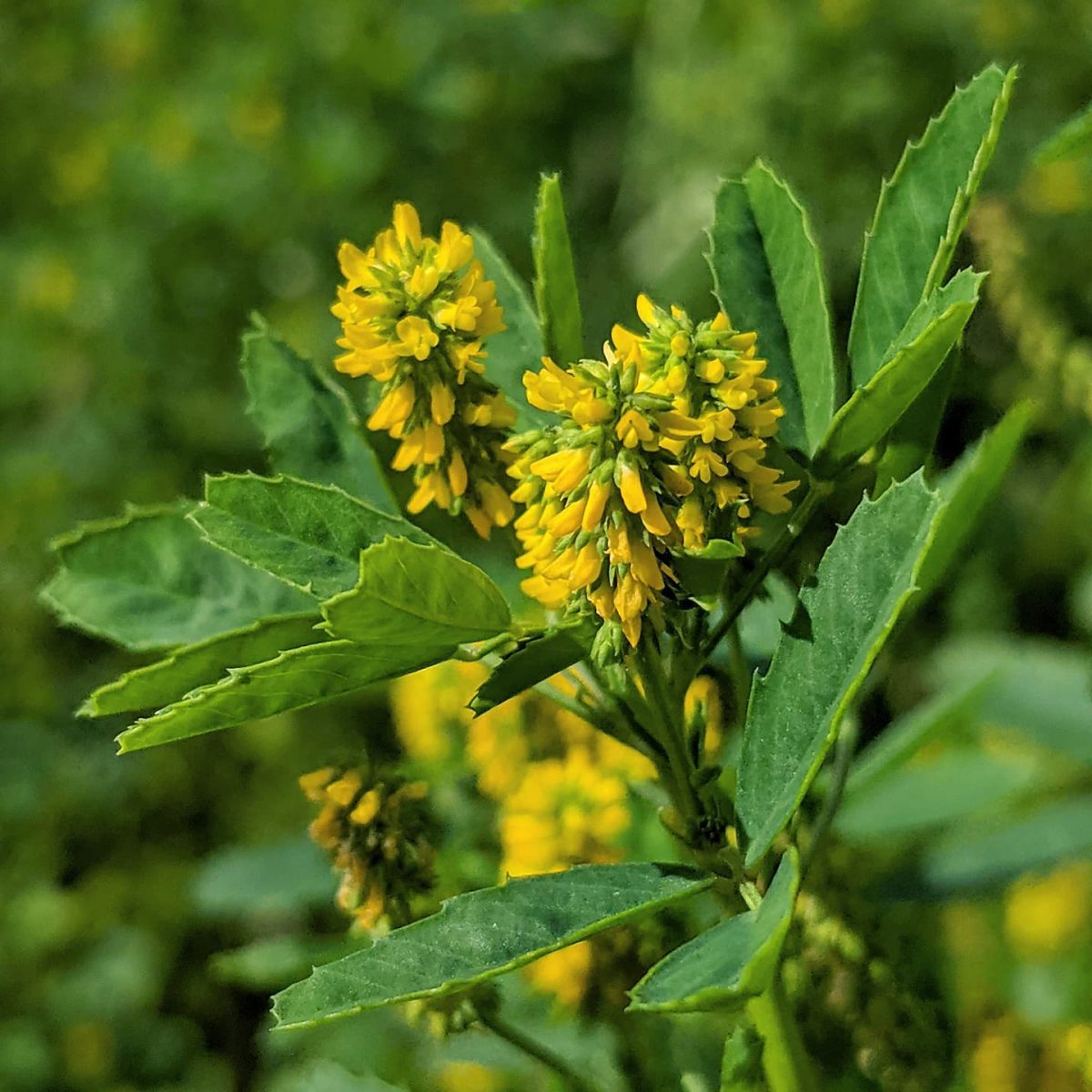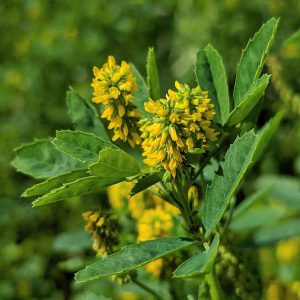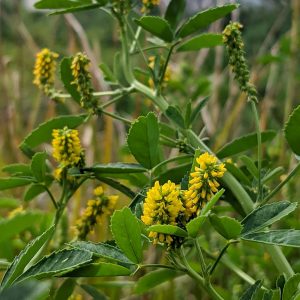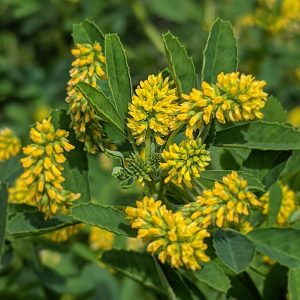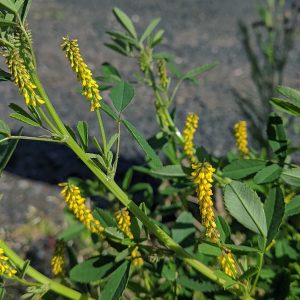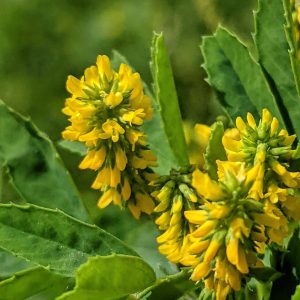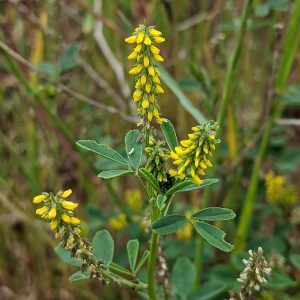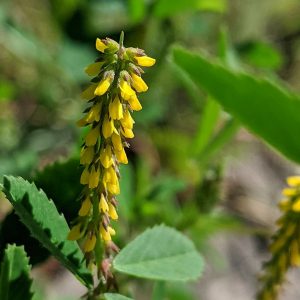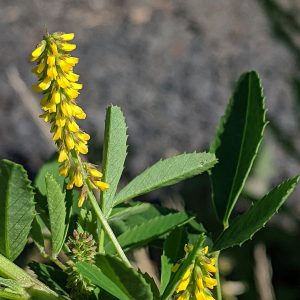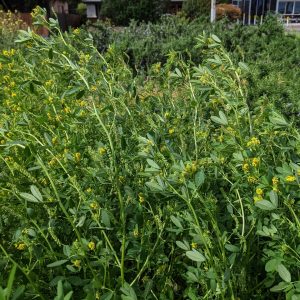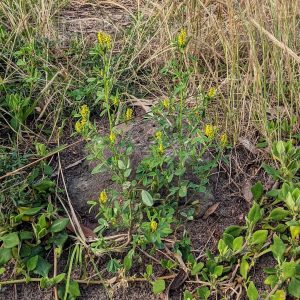Sweet Melilot (Melilotus indicus), an aromatic Eurasian legume introduced as a pasture improver and seed contaminant.
Equally useful and disastrous but lacking the technicolor calamity of certain other weed ‘curses’, Sweet Melilot presents a modest but quintessential Australian weed story: a great success on difficult soils, but equipped with an odour so enduring it taints not only milk but mutton and flour. The plant attracted local names across the country: the Hexham Scent in NSW; Minninup Weed, Norris’s and Sutton’s Weeds on coastal strand south of Perth; and King Island Melilot in the Bass Strait.
An 1850 Maitland Mercury recounted Sweet Melilot’s (apocryphal?) arrival on the Hunter: ‘Some years since a gentleman sent up from Sydney to a friend at Hexham a small quantity of seed of a new kind of lucerne, bearing a yellow flower…’
The plant had become the ‘Hexham Scent’ by 1859, its effect on flour milled from wheat harvested with it so intolerable that ‘many persons refuse[d] to eat the bread, imagining it to be bad.’
On King Island, it was reportedly sown as fodder by early graziers. While the first operators failed, by the 1900s the fodder had so successfully converted the island’s ‘wastes’ to productively fattening beef cattle that harvested seed was marketed back to the mainland as King Island Melilot, and had also acquired a new legendary origin, brought onto the island in the bedstraw of shipwrecked Italian or Norwegian sailors!
Tested at Dookie and widely spruiked as a green manure for Federation-era orchards, new popularity forced associations to issue warnings about a resurgent menace. In 1933, Victorian millers and wheat agents were instructed to refuse deliveries from areas afflicted with Hexham Scent; in 1953 the plant again became a concern, contaminating much of the Victorian wheat harvest from Dimboola to Dookie.
Superseded economically by weedy but less offensive improvers like Barrel Medic, Sweet Melilot remains a pervasive but easily overlooked springtime accent both regionally and in Melbourne’s sandy urban medians and margins.
View Original Post on Instagram
Search for information about Melilotus indicus in the Flora of Victoria
View information and occurrences of Melilotus indicus on the Atlas of Living Australia
